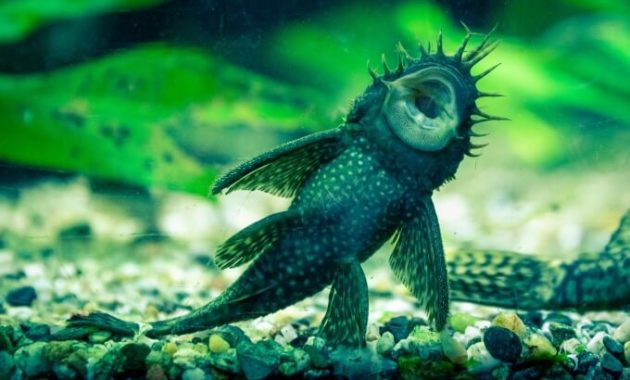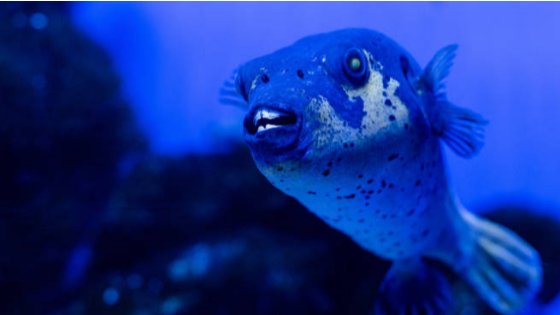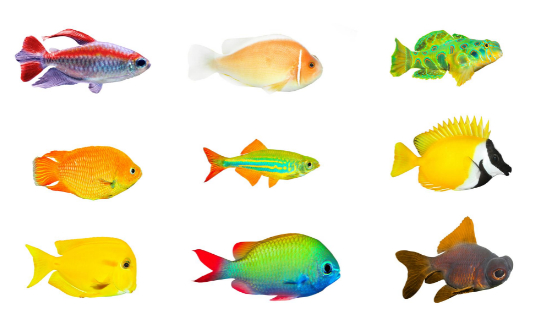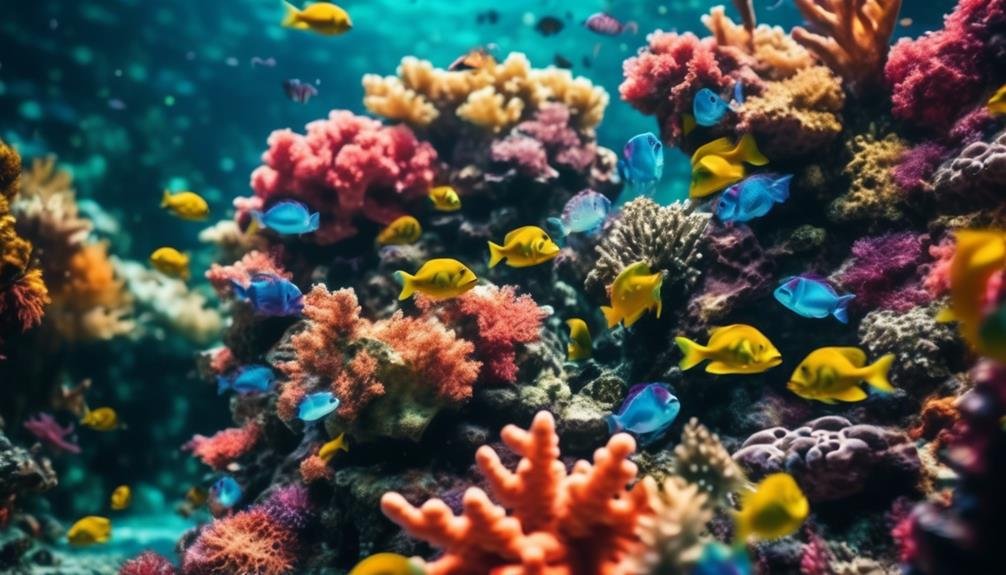
Looking to add some flair to your aquarium? Well, look no further than the colorful grunts! These fish not only bring a splash of vibrant hues to your underwater world but also possess a talent that sets them apart from the rest.
And no, it’s not singing or dancing, but rather a unique ability to produce a distinct grunting sound by grinding their teeth. Intrigued?
Well, let’s dive deeper into the fascinating world of colorful grunts and uncover their peaceful nature and extraordinary talents.
Key Takeaways
- Grunts are a family of saltwater fish with 150 different sub-species, many of which are highly colorful.
- Grunts are known for their distinctive grunting sound, which they produce by grinding their teeth.
- They are peaceful fish that can be kept in community tanks and are compatible with medium to large saltwater fish.
- Grunts require large swimming spaces, hiding spots, and should be fed live foods during the night.
Grunts: A Colorful Fish Family
Grunts, a family of saltwater fish with 150 different sub-species, showcase their vibrant colors, making them a truly colorful addition to any aquarium. These front-heavy, laterally compressed fish have bodies that come in shades of red, yellow, blue, and green. Their stunning coloration immediately catches the eye and adds a lively touch to your aquatic display.
Grunts are highly favored by many aquarists due to their peaceful nature, making them compatible with other medium to large saltwater fish. To ensure their well-being, it’s recommended to keep them in fairly large groups, providing ample swimming spaces and hiding spots. These nocturnal creatures should be fed during the night, with live foods such as polychaete worms and shrimp.
Grunts aren’t only visually appealing but also bring a sense of tranquility to your aquarium.
Origins and Distribution of Grunts
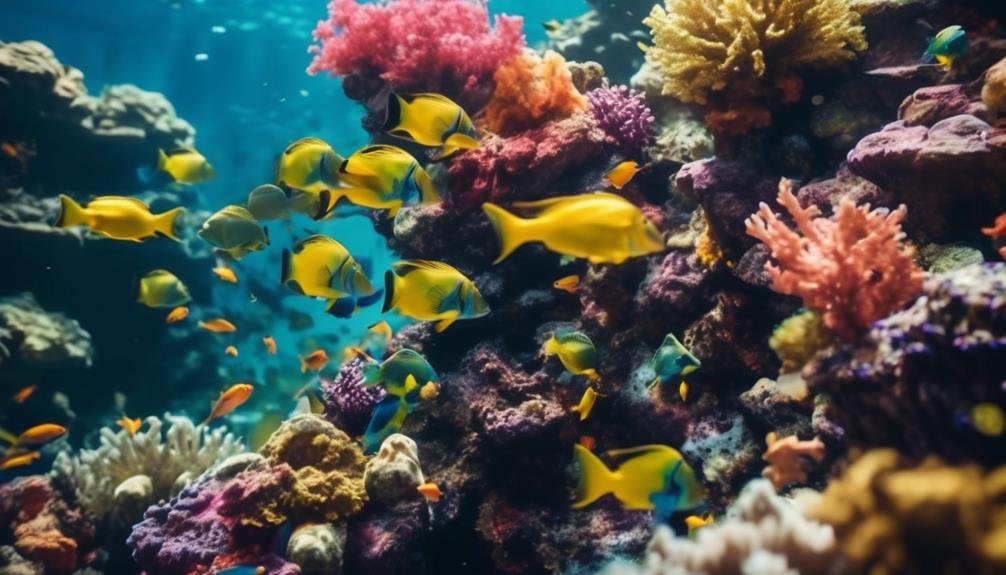
The origins and distribution of grunts can be traced to various regions in the Atlantic, Pacific, and Indian Oceans. Grunts are native to these oceans and can be found in different parts of the world. Different sub-species of grunts have adapted to different marine environments, resulting in their diverse geographical distributions.
Some grunts have even been successfully introduced to the aquarium hobby. These peaceful fish are favored by many aquarists for their vibrant colors and unique characteristics. With their front-heavy, laterally compressed bodies, grunts have a distinct appearance that sets them apart. Their colorful hues of red, yellow, blue, and green make them visually appealing in aquariums.
Vibrant Appearance and Coloration
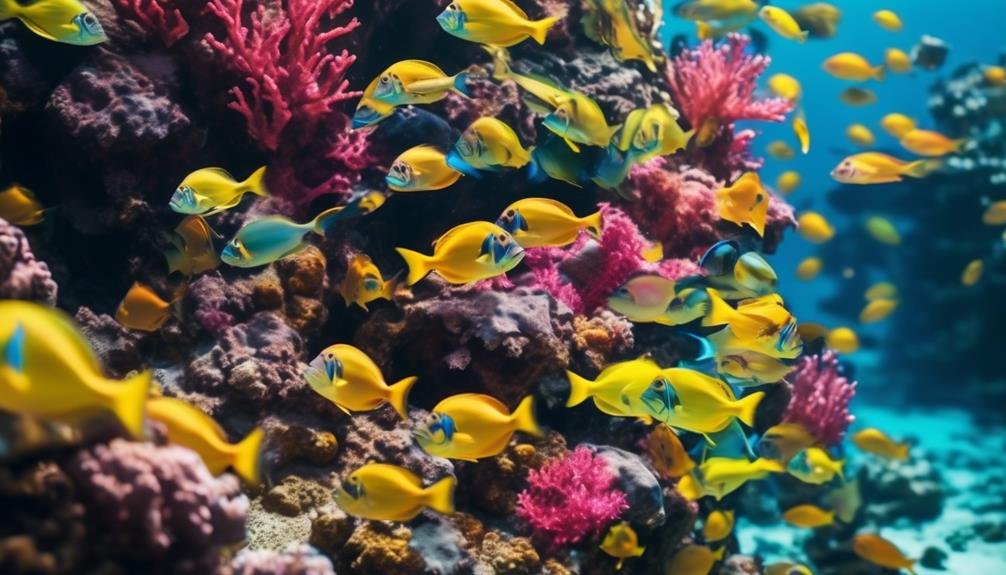
With their vibrant colors and unique body shape, grunts captivate the eyes of aquarium enthusiasts. Here are three things that make their appearance truly remarkable:
- Dazzling Coloration: Grunts come in shades of red, yellow, blue, and green, making them a vibrant addition to any aquarium. Their colors are so vivid that they instantly catch your attention and add a splash of excitement to your tank.
- Distinct Body Shape: Grunts have a front-heavy, laterally compressed body shape that sets them apart from other fish. This unique feature gives them a streamlined appearance, allowing them to effortlessly glide through the water with grace and elegance.
- Overall Visual Appeal: The combination of their vibrant colors and distinct body shape creates a visually stunning sight. Whether they’re peacefully swimming or hiding amongst the rocks, grunts never fail to captivate with their eye-catching appearance.
Peaceful and Compatible Tankmates
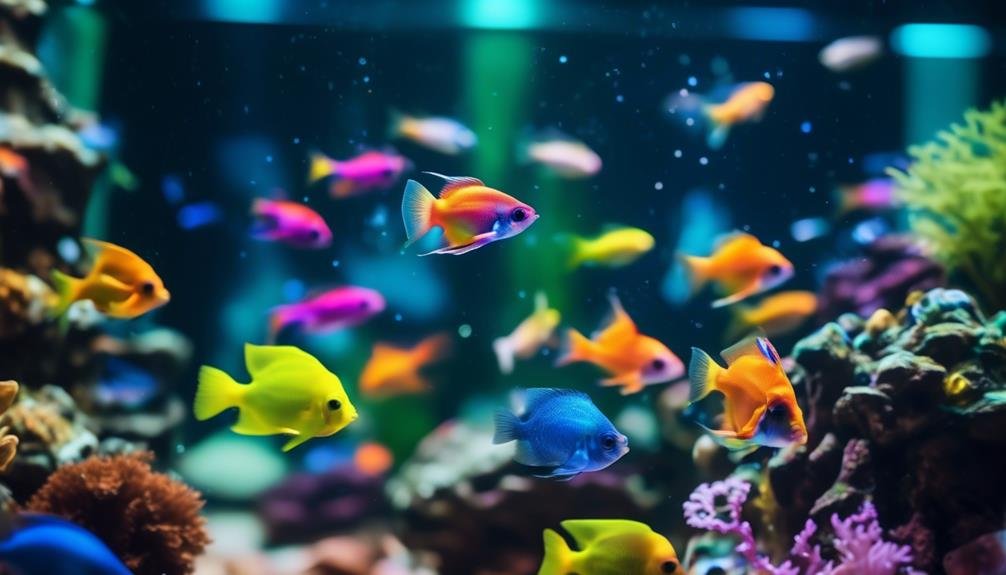
To create a harmonious aquarium community, consider adding peaceful and compatible tankmates for grunts. Grunts are relatively peaceful and can be kept in community tanks with medium to large saltwater fish. They’re known to be compatible with a variety of species, making it easier to find suitable tankmates.
Keeping grunts in fairly large groups can help prevent aggression and provide a more natural environment. It’s important to provide enough swimming space and hiding spots for all the fish in the tank.
Remember that grunts are nocturnal, so it’s recommended to feed them during the night. By selecting peaceful and compatible tankmates, you can ensure a tranquil and enjoyable aquarium experience for your grunts.
Care and Maintenance Tips
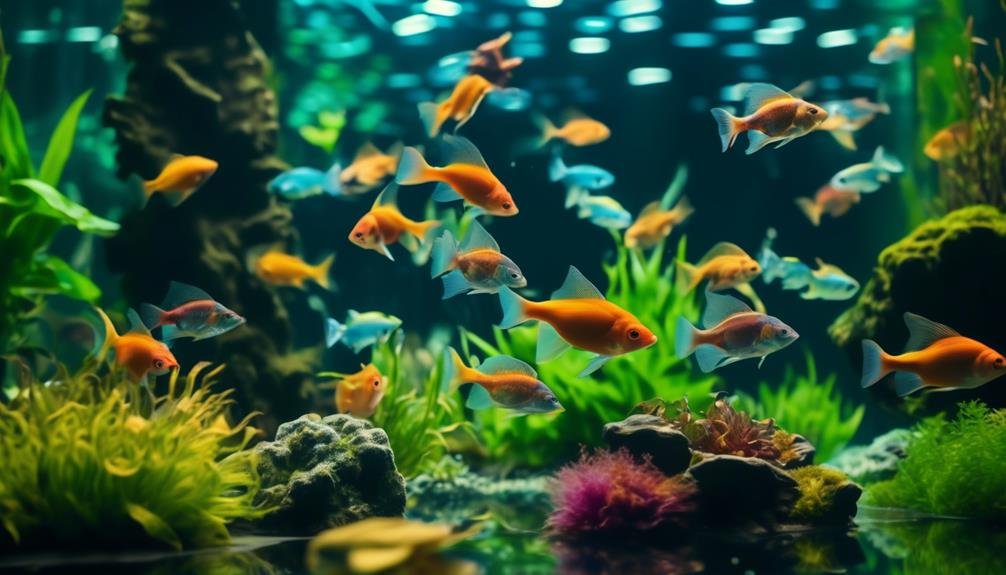
To ensure the well-being of your grunts, it’s essential to follow these care and maintenance tips in order to provide them with a suitable environment.
- Keep them in a community tank: Grunts are relatively peaceful and can be kept with medium to large saltwater fish. This ensures a harmonious coexistence and minimizes the risk of aggression.
- Provide ample space and hiding spots: Grunts require large swimming spaces and hiding spots to feel secure in their environment. Make sure your tank has enough room for them to roam and explore, and provide plenty of caves or plants for them to hide in.
- Feed them during the night: Grunts are nocturnal and should be fed after the lights go out. Offer them live foods such as polychaete worms and shrimp to meet their dietary needs. Be cautious when housing them with small crustaceans, as they may be seen as prey.
Feeding Habits of Grunts
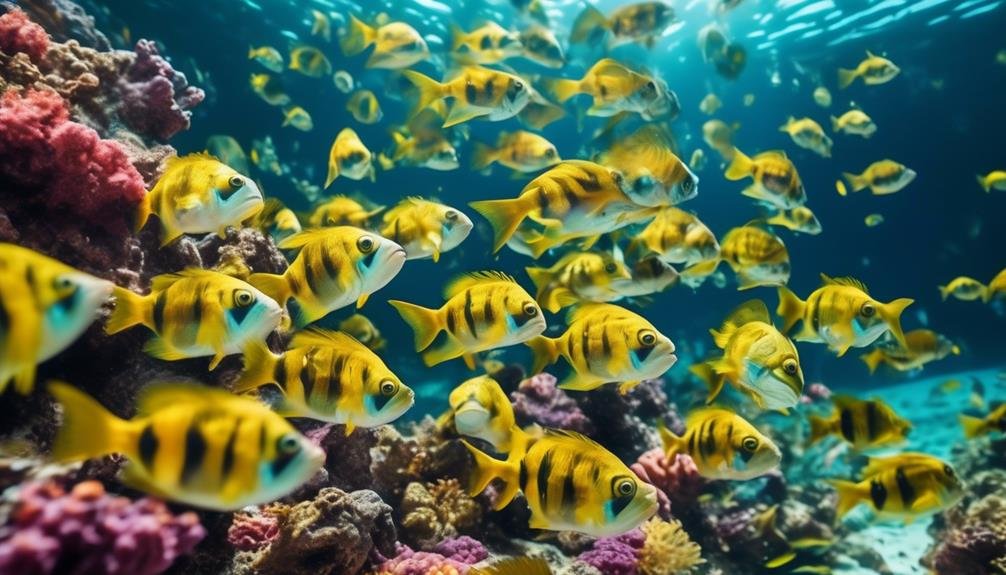
Grunts exhibit unique feeding habits that contribute to their overall health and vitality. These peaceful fish should be fed live foods such as polychaete worms and shrimp. It’s important to be cautious when housing grunts with small crustaceans, as they may view them as prey.
To ensure their well-being, it’s recommended to keep grunts in fairly large groups, providing them with ample swimming spaces and hiding spots. Additionally, grunts are nocturnal creatures, so it’s best to feed them during the night.
While little is known about breeding grunts in home aquariums, further research is needed to understand their reproductive biology and specific breeding behaviors. By adhering to their unique feeding habits, you can help maintain the health and vitality of these colorful fish.
Breeding Challenges and Research
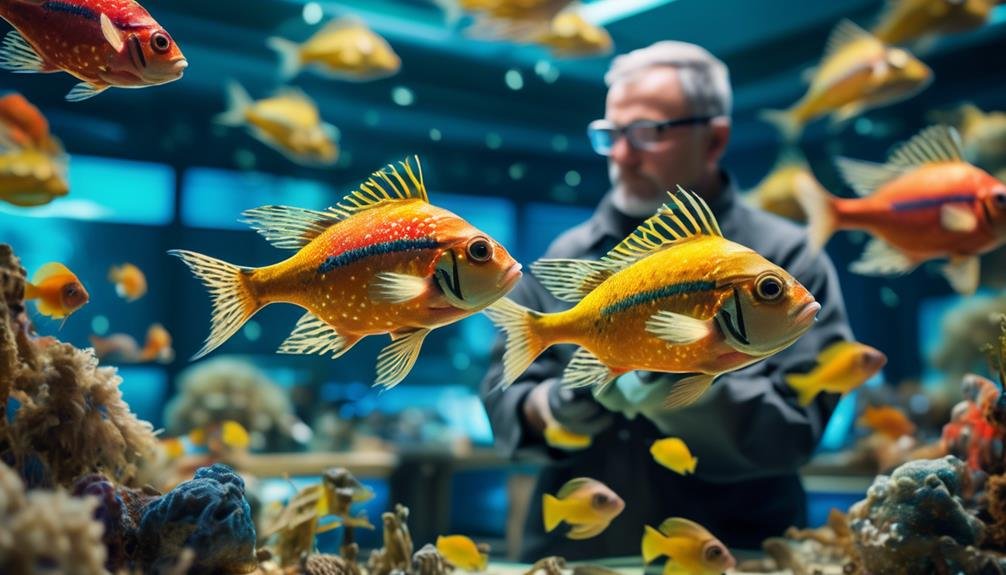
After understanding the unique feeding habits of grunts, it’s important to address the challenges and ongoing research associated with breeding these colorful fish. Breeding grunts in home aquariums isn’t well-documented, and there’s still much to learn about their reproductive biology. Here are three key challenges and areas of research in grunt breeding:
- Reproduction behavior: Studying the courtship and mating behaviors of grunts is essential to ensure successful breeding. Observing their interactions and identifying triggers for spawning can help aquarists create optimal conditions for reproduction.
- Egg and larval development: Understanding the development stages of grunt eggs and larvae is crucial for their survival. Research is needed to determine the optimal water parameters, food sources, and rearing techniques to support their growth and health.
- Genetic diversity: Maintaining genetic diversity is important for the long-term health and sustainability of captive-bred grunts. Researchers are exploring methods for preserving genetic variability, such as selective breeding and the establishment of breeding programs among different aquarium facilities.
Unique Talents of Grunts
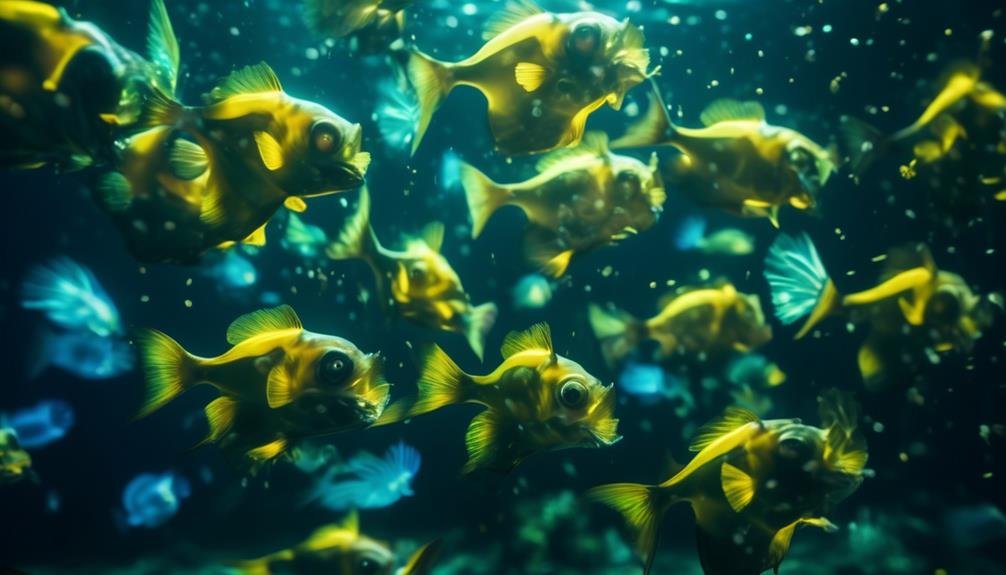
Grunts showcase an array of unique talents that make them fascinating additions to any aquarium. One of their remarkable abilities is their talent for producing distinct grunting sounds. By grinding their teeth together, grunts create a sound that’s both intriguing and distinctive. This talent not only adds an interesting auditory element to the aquarium, but it also serves as a form of communication among the fish.
Additionally, grunts possess the talent of being able to adapt to different marine environments. Their ability to thrive in various regions around the world is a testament to their remarkable resilience.
With their vibrant colors and peaceful nature, grunts truly stand out as remarkable fish with exceptional talents.
Conclusion: Delightful Additions to Your Aquarium
When considering new additions to your aquarium, grunts are delightful fish that bring vibrant colors, peacefulness, and unique talents to enhance your underwater environment. These colorful creatures won’t only add a pop of color to your tank, but they’ll also create a serene and tranquil atmosphere for your other aquatic inhabitants.
Here are three reasons why grunts are the perfect addition to your aquarium:
- Vibrant Colors: Grunts come in a variety of shades, including red, yellow, blue, and green. Their vibrant hues will create a visually stunning display, making your aquarium a focal point in any room.
- Peaceful Nature: Grunts are known for their peaceful temperament, making them compatible with other medium to large saltwater fish. They can be kept in community tanks, providing a harmonious environment for all your aquatic friends.
- Unique Talents: Grunts have the ability to produce a distinct grunting sound by grinding their teeth. This unique talent adds an extra layer of fascination to their already charming presence in your aquarium.
With their vibrant colors, peaceful nature, and unique talents, grunts are the perfect choice to enhance your aquarium and create a captivating underwater world.
Frequently Asked Questions
Are There Any Specific Water Parameters That Grunts Require in Order to Thrive in an Aquarium?
In order for grunts to thrive in an aquarium, you should ensure specific water parameters. Maintaining a stable temperature between 75-82°F, pH level of 8.1-8.4, and salinity of 1.020-1.025 will help create an optimal environment for them.
Can Grunts Be Kept in a Reef Tank With Corals and Other Invertebrates?
Yes, grunts can be kept in a reef tank with corals and other invertebrates. They are peaceful fish and are compatible with reef aquariums. Just make sure to provide them with enough space and hiding spots.
Do Grunts Have Any Unique Behaviors or Interactions With Other Fish in the Aquarium?
Yes, grunts have unique behaviors and interactions with other fish in the aquarium. They are peaceful and can be kept with a variety of saltwater fish. Their colorful appearance adds visual appeal to the tank.
Are There Any Specific Diseases or Health Issues That Grunts Are Prone To?
Yes, grunts are prone to certain diseases and health issues. It is important to monitor their water quality, provide a balanced diet, and quarantine new additions to prevent the spread of infections.
How Long Do Grunts Typically Live in Captivity?
Grunts typically live for 5-10 years in captivity. Ensure they have a suitable environment with large swimming spaces and hiding spots. Feed them a balanced diet and provide proper care to maximize their lifespan.
What Unique Talent Do Drum Fish Possess Similar to Colorful Grunts?
Drum fish also possess a unique talent similar to the colorful grunts. They are able to produce drumming sounds by using their swim bladders. This is one of the fascinating features of the colorful world of drum fish that sets them apart from other species in the ocean.
Conclusion
So there you have it, colorful grunts are a delightful addition to any saltwater aquarium. With their vibrant colors, peaceful nature, and unique talent for grunting, these fish will surely catch your eye.
Their adaptability to different marine environments and compatibility with other tankmates make them a great choice for community tanks. Just make sure to provide ample swimming space and hiding spots.
While breeding grunts may be challenging, their feeding habits and overall care requirements are relatively easy to meet.
So why not add some color and tranquility to your underwater world with these beautiful fish?

